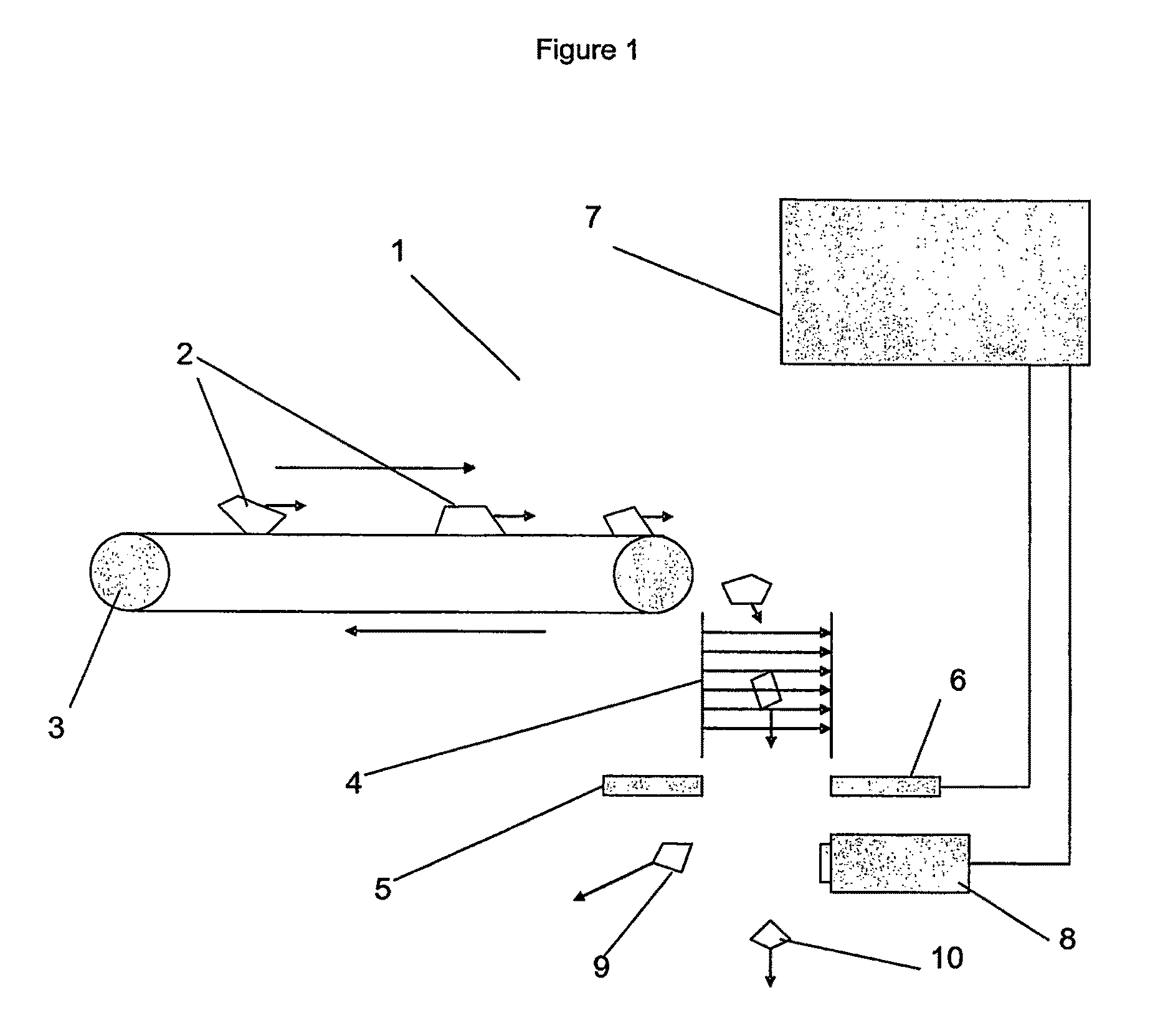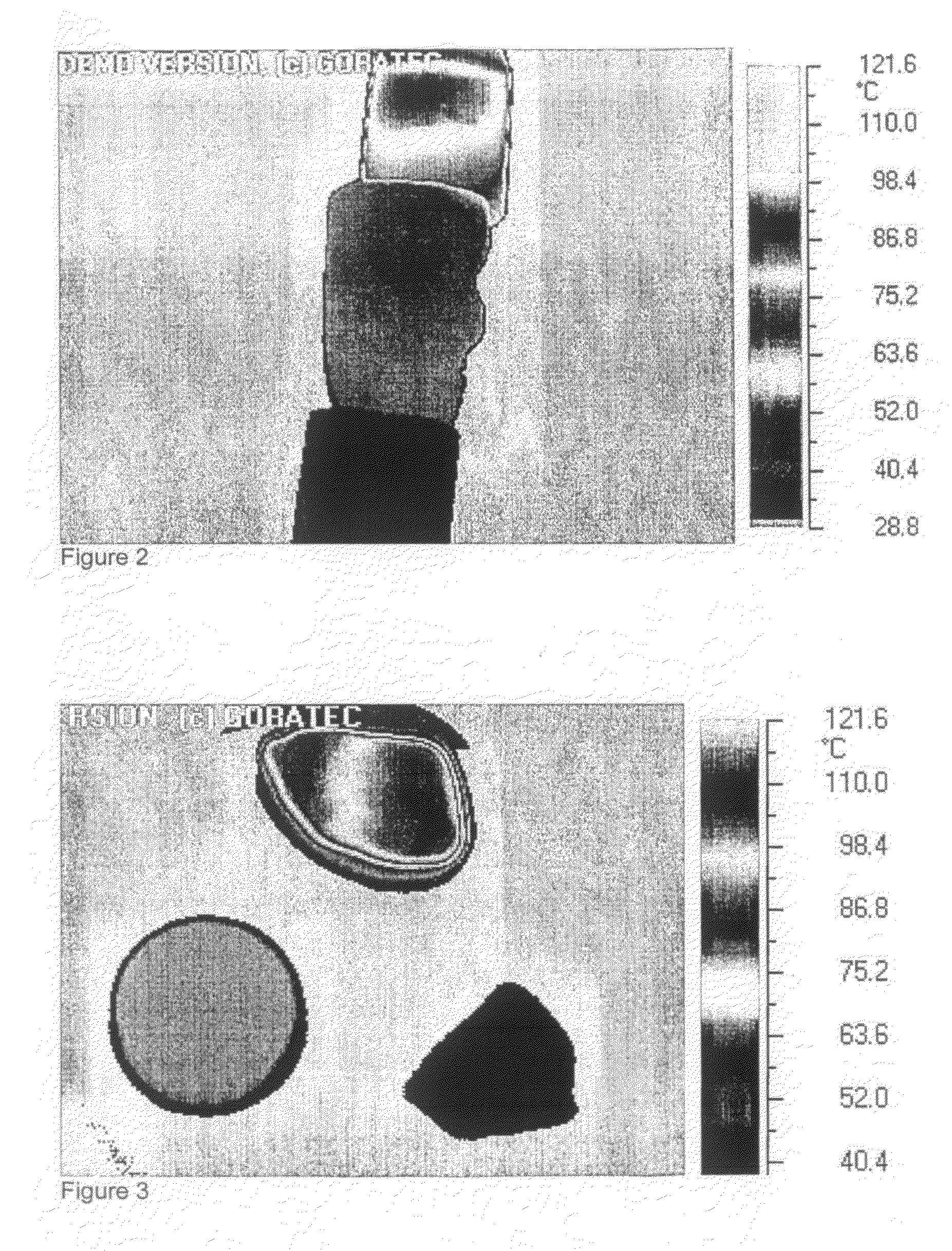Method of determining the presence of a mineral within a material
a mineral and material technology, applied in the direction of optical radiation measurement, specific gravity measurement, instruments, etc., can solve the problems of low efficiency of sorting method, inability to provide information about mineral distribution pattern, and methods that cannot provide an assessment of whether mineral deposits are located in the centre or on the surface of rocks, etc., to achieve improved radiation detection, greater wavelength, and high precision
- Summary
- Abstract
- Description
- Claims
- Application Information
AI Technical Summary
Benefits of technology
Problems solved by technology
Method used
Image
Examples
Embodiment Construction
[0077]It will be convenient to hereinafter provide a detailed description of certain embodiments of the invention with reference to the accompanying drawings. The purpose of providing this detailed description is to instruct persons having an interest in the subject matter of the invention how to put the invention into practice. It is to be clearly understood however that the specific nature of this detailed description does not supersede the generality of the preceding statements.
[0078]In the drawings:
[0079]FIG. 1 illustrates an apparatus according to one embodiment of the invention;
[0080]FIG. 2 is an IR image of a high grade copper ore, medium grade copper ore and a barren rock after brief exposure to microwave heating;
[0081]FIG. 3 is an IR image of a high grade ore fragment, a sandstone fragment and waste rock after brief exposure to microwave heating;
[0082]FIG. 4 is an IR image of a high grade copper ore, homogenous sandstone, waste rock and low grade copper ore after brief expo...
PUM
 Login to View More
Login to View More Abstract
Description
Claims
Application Information
 Login to View More
Login to View More - R&D
- Intellectual Property
- Life Sciences
- Materials
- Tech Scout
- Unparalleled Data Quality
- Higher Quality Content
- 60% Fewer Hallucinations
Browse by: Latest US Patents, China's latest patents, Technical Efficacy Thesaurus, Application Domain, Technology Topic, Popular Technical Reports.
© 2025 PatSnap. All rights reserved.Legal|Privacy policy|Modern Slavery Act Transparency Statement|Sitemap|About US| Contact US: help@patsnap.com



